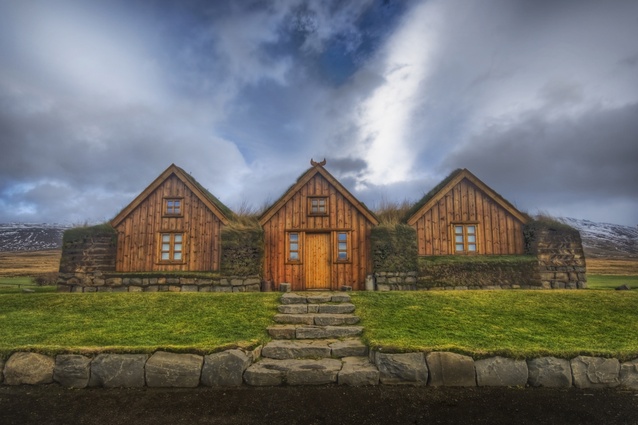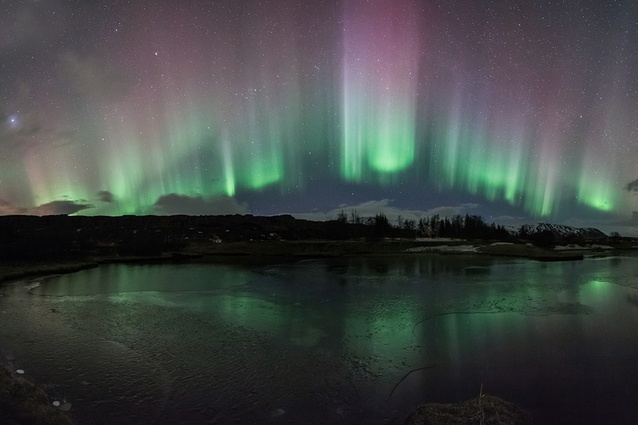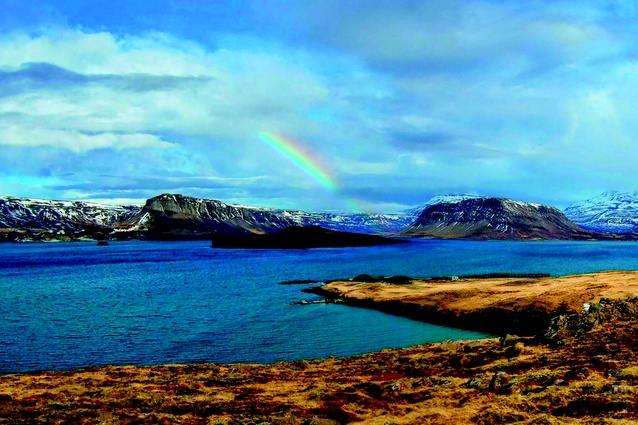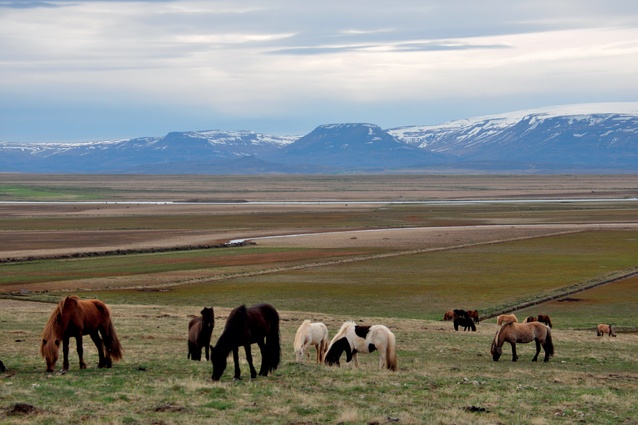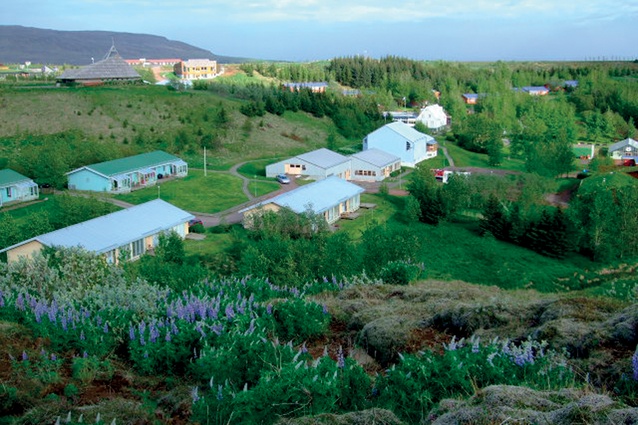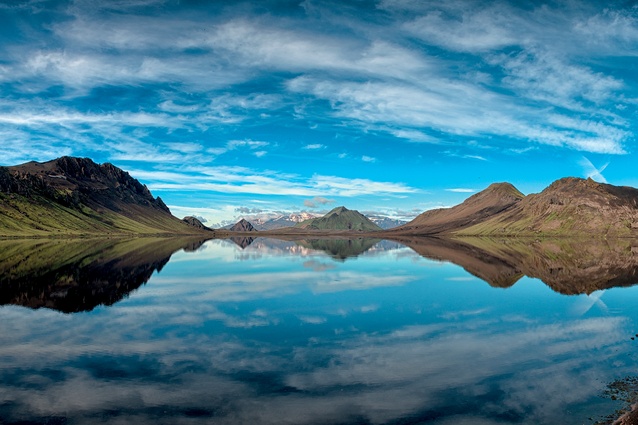Iceland: Tourism plus
Iceland is becoming a ‘must visit’ place for travellers from all over the globe, and a convenient international meeting venue. The airports are clogged, hotels are busy and tour groups in hard hats and crampons can be seen on the glaciers. I visited as a tourist but learned and enjoyed so much more than the average visitor.
The Icelander landscape architects showed warm hospitality and enabled an understanding of culture and place which no careful reading of Lonely Planet could have provided. The visit was an opportunity to learn from local practitioners and see the country through their eyes, which helped me reflect on landscape architecture in New Zealand as it compares and contrasts with that of Iceland, a country with many commonalities.
Turf roofs and walls have been used for homes and other buildings in Iceland for centuries. In combination with the Icelandic language and script, the link to Tolkein’s Middle Earth and Hobbits was stark. Green roofs have an essential use as insulation during Iceland’s more testing winters. Other links to New Zealand include glaciers, geysers and other volcanic activity, with landscapes moulded by lava flows; as well as the wildlife almost solely enriched by birds (Iceland has a small endemic mouse, while we have bats and seals). I noted the scourge of lupins being seeded over the Icelandic landscape, just as the South Island high country has ‘enjoyed’ their prolific spread.

Near the time the Polynesians commenced exploration of New Zealand, Norwegian emigration to Iceland took place. “Those were the stubborn ones,” explained a Norwegian colleague. The ‘stubborn ones’ chose to leave Norway rather than comply with political edicts of the time. Icelandic ancestry is composed, my friend Aslag explained, of Norwegian male and Irish female bloodlines, making for a resilient race. And just as New Zealanders emigrated to Australia a few years ago, so Icelandic landscape architects sought jobs in Scandinavia during their more recent economic crisis. “They are returning as work is picking up again to address tourism, and other development,” I was told.
Reykjavik is the capital city and home to 78 per cent of Icelanders (out of the total population of 350,000). The city is contained within 50 square kilometres and has a rural/urban ‘green scarf’ protecting those boundaries. Reykjavik is a low-density city. Attractive features of the old city centre include new cycleways, which have been developed with heating for winter access; and green links to the harbour, including salmon rivers and streams. Reykjavik harbour is a working fishing port around which cluster hotels and the magnificent new concert hall. Architecture retains corrugated iron cladding in the city centre, and has a ‘quirky’ feel.
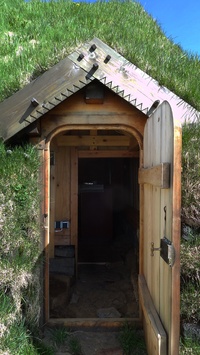
While the city centre has the low-rise charm of a village, more outlying urban areas are densifying, accompanied by attractive Scandinavian architecture. Similar to Auckland, sprawl and densification are the key issues for Bjorn Axelsson, a UK-trained landscape architect and the city planner of Reykjavik. Rather than high-rise development, emphasis is on sustainable neighbourhood plans. This includes master planning for community, transport, energy, buildings and natural hazards. Bjorn developed seven principles for urban design, and has a strong vision for sustainability, harbour visibility, and retaining large interconnecting green wedges through the city to the coast. He sought residential panel input through planning days in neighbourhoods.
Some 50kms from Reykjavik is the national park of Thingvellir. The landscape has fault scarps, waterfalls, a deep lake with sunken islands… and pressure from increasing tourism. The restrained design of the new photography platforms, buildings and boardwalks were an elegant feature. Einer Asger, a landscape architect who had been impressed by the NZ Department of Conservation’s concession system and discussed common issues with Herwi Scheltus, our remaining landscape architectural employee of DOC, described familiar issues: tight financial resources and high expectations. “New Zealand,” said Einer, “is like Iceland on steroids.”
Solheimar was Iceland’s first eco-village, developed for sheltered dwelling and environmental care some 80 years ago. It is a 45-minute drive from Thingvellir through pastoral countryside. Two children, who spoke excellent English, escorted me around the village so that I could appreciate how it was managed. They have recently built a bakery, café, have art workshops and tunnel houses for flowers and vegetables for the Reykjavik market, and have three guest houses. There were turfed roofs in Solheimar as well as a troll garden, and a sculpture walk in honour of early founders. Solheimar was one of the most peaceful places I have ever visited.
Aslag Traustadottir is a senior landscape architect whose practice covers a range of work from urban design, kindergartens, hydro-generation plant expansion, to roading and tourism. She took me to the highland lava desert landscape, historic caves and dwellings, and sites of natural significance on the way to her summer house for an overnight stay.
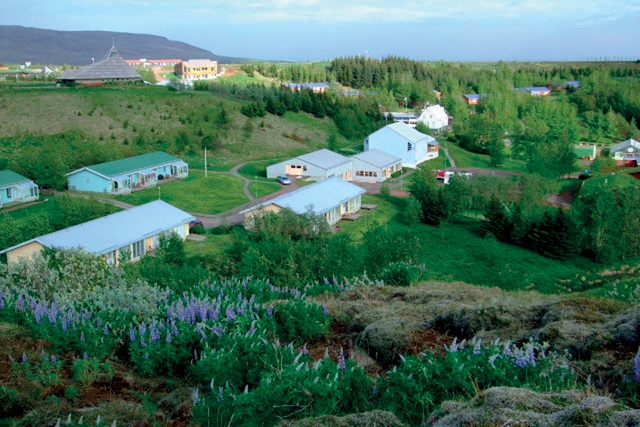
Imagine waking up (although the sun did not actually disappear, it only became twilight for a few hours) to gaze over an expanse of braided river valley bathed in golden sunshine, looking to the distant coast over grassy horse paddocks. We visited stone drafting yards constructed a century ago for sorting sheep after their return from summer feeding in the high country before overwintering in turf barns.
We gave a lift to a Spanish environmental sciences graduate who was planting trees over summer. There are few trees in the countryside, and native vegetation is low growing, so Icelanders are keen to re-cloth the landscape for shelter and amenity. As with lupin and non-native conifers in New Zealand, managing the spread of exotics is an on-going issue. FILA president, Hermann Georg Gunnarsson arranged a meeting in Reykjavik with FILA members.
There, I learnt there is no training for landscape architecture in Iceland – most of the profession trains in Scandinavia through 5-year programmes. The FILA plan to hold an IFLA World Congress, if they obtain approval, in about six years’ time (2021). It would be an event to look forward to and I encourage any colleague who can manage the long haul travel to attend.
What else did I learn from this experience of hospitality in a country not so very dissimilar from New Zealand? I realised that we should identify key contemporary and enduring designed landscapes, as well as some of our natural treasures near cities, to show our colleagues when they make the journey to holiday in New Zealand. Through the NZILA perhaps we could develop a list of those members who enjoy hosting professional visitors. Then, even if we do not leave these shores, we all can gain from the experiences of other professional colleagues.

